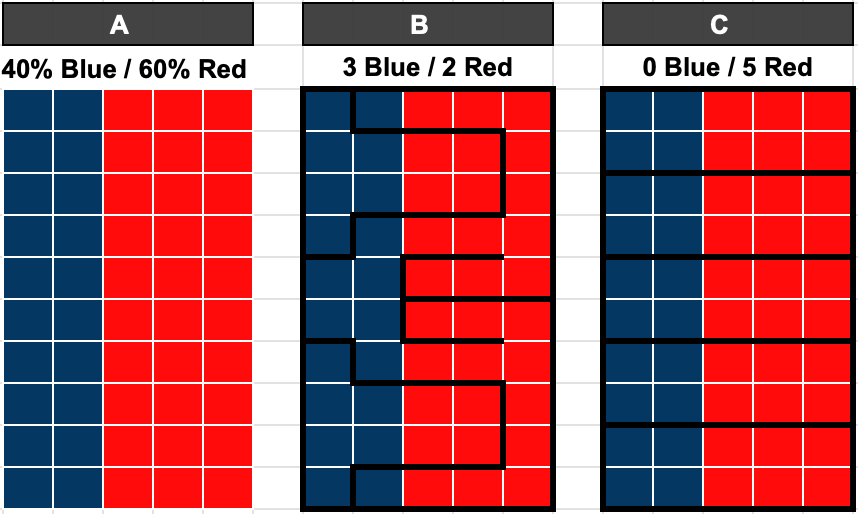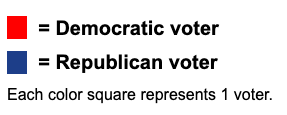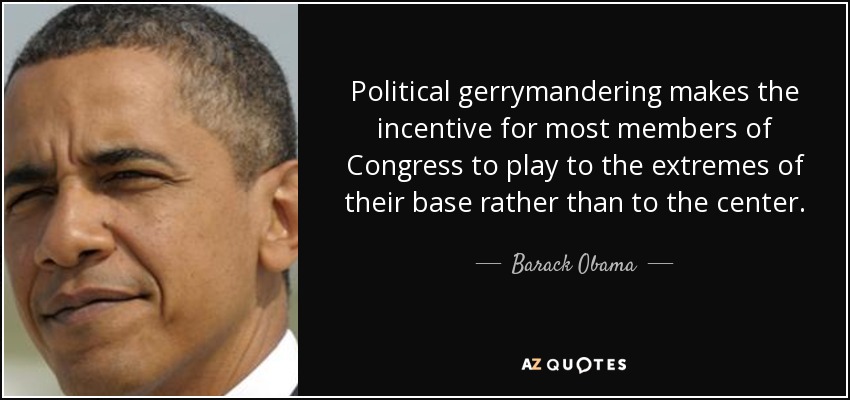By Evan B. and Lucas C.
What is gerrymandering?
Gerrymandering is a strategy a political party uses to get an advantage over the other party. Both parties don’t usually use gerrymandering at the same time.
Political parties do this by drawing the boundaries of the Congressional districts in a state so that they have a majority of voters from their party in each district. One political party will gerrymander the Congressional districts to elect more representatives to the House of Representatives than the other party. Gerrymandering makes it so they can win most of the districts even if the other political party has more people voting for the opposing candidate.
Where did the term “gerrymandering” come from?

(Photo: Elbridge Gerry)
The term “gerrymandering” was created in 1812 by a man named Elbridge Gerry. Elbridge Gerry was born on July 17, 1744 and died on November 23, 1814. He was an American politician and eventually became the vice president of the fifth president, James Madison. Gerry signed both the Declaration of Independence and the Articles of Confederation. He also helped write our Constitution, but he didn’t sign it.
See the first “gerrymander” map here.
Gerrymandering Examples

Graphic designed by Evan B.

Chart A shows a state with 50 voters and 1 Congressional district. With 30 Republican voters and 20 Democratic voters, a Republican candidate would be elected to represent that Congressional district in the House of Representatives. There is no gerrymandering in Chart A.
Chart B shows the same state with 5 gerrymandered Congressional districts favoring the Democrats. If the Democrats control the state’s government and they know that the Republicans outnumber them, they can draw creative lines to elect more Democratic representatives to the House of Representatives. Look how complicated and odd looking the lines are drawn. The Democrats elect 3 people to the House of Representatives with only 40% voting Democratic. This method is called “neither compact nor fair.” What a perfect name!
For example, in 2012, Democrats won 51% of the popular House vote in Pennsylvania, but they only won 5 out of 18 House seats, which is less than 30%. Pennsylvania Republicans redrew the state’s Congressional districts using the “neither compact nor fair” method.
Chart C shows the same state with 5 gerrymandered districts favoring the Republicans. If the Republicans control the state’s government, they decide how the lines are drawn. They draw them horizontally, so that in each district there are more Republican voters and fewer Democratic voters. The Republicans elect their candidates to the House of Representatives in all 5 districts. This method is called “compact but unfair.”
For example, in 2012, Democrats received 66% of the popular House vote. But they won 21 out of 27 House seats, which is close to 80%, using this “compact but unfair” method.
Is gerrymandering unfair?
Gerrymandering is unfair because it gives one political party an advantage by giving the other party less of a chance to elect their representatives. Election results should be based on how voters feel about the party’s vision/what they believe in, also known as the party platform, not on how Congressional districts are broken up.
 When you try to separate districts, sometimes race and income become big factors. Sometimes one particular race favors one political party over another. When you separate these districts, you also disconnect races. People may think this can give more power to minority voters by increasing their chances of electing officials of the same race.
When you try to separate districts, sometimes race and income become big factors. Sometimes one particular race favors one political party over another. When you separate these districts, you also disconnect races. People may think this can give more power to minority voters by increasing their chances of electing officials of the same race.
Here’s something we should all ask ourselves: Is it more important to elect officials of your own race, or is it more important to belong to a powerful political party? If you also believe that elections should be won based on the vision of the political party and not by manipulating, please sign this petition to end gerrymandering NOW!!

